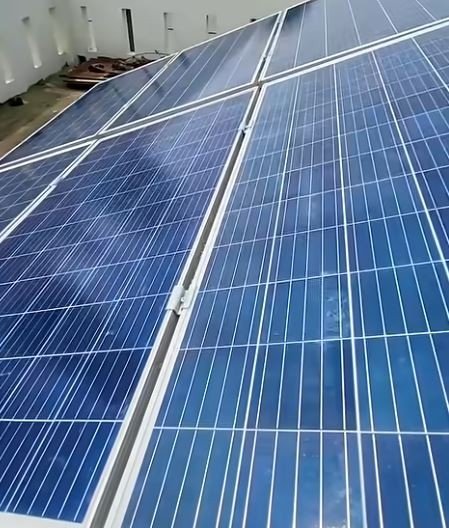
A complete guide to residential solar power
If you’re considering solar power for your home in India, here’s a friendly, up-to-date guide covering subsidies, costs, system size, space, power output, and returns.
1. Subsidy and Customer Payment (kW-wise)
- The Indian government offers substantial subsidies for rooftop solar systems, varying by state and system size. Typically, for residential rooftop systems up to 3 kW, you can get a subsidy of about 40% of the benchmark cost; for systems between 3–10 kW, it’s around 20%. This means:
- For a 3 kW system (approx. ₹2,00,000 total), you may get ₹80,000 subsidy, so your net payment is ₹1,20,000.
- For larger capacity, the per-kW subsidy reduces, but you’ll still receive government support.
2. Space Required (kW-wise)
- Each kW of solar panels typically needs about 100 sq. ft. of shadow-free rooftop space.
- 1 kW = 100 sq. ft.
- 3 kW = 300 sq. ft., and so on.
3. Power Generation (kW-wise)
- In India, a 1 kW solar rooftop system generates around 4 units (kWh) per day in good sunlight conditions, or approximately 1,400–1,500 units annually.
- 3 kW system ≈ 4,200–4,500 units/year
4. Revenue/Savings
- With average residential power tariffs ranging from ₹6–₹10/unit, a 1 kW system can help you save about ₹8,000–₹15,000 per year depending on your state’s tariffs and consumption pattern.
5. On-Grid Meter & Net Meter
- Net metering is the prevalent model: any surplus power your panels generate is exported to the grid, and your electricity bill is offset accordingly.
- A net meter is installed to track energy sent to and drawn from the grid, ensuring you’re only billed for “net” consumption.
6. Solar Inverter Models
- On-grid/string inverters are common for net metering. High-efficiency brands include:
- Sungrow (2–8 kW models, efficiency ≥99%)Luminous NXI (grid-tie, anti-islanding & smart features, 2–5 kW)
- APS (1–10 kW, with MPPT for max output, up to 98.5% efficiency, 10-year warranty)
- Microinverters and hybrid models are options for more complex setups or shaded roofs.
7. Estimated Costs
- 1 kW on-grid system: ₹50,000–₹70,000 (after subsidy)
- 3 kW system: ₹1,20,000–₹1,50,000 (after subsidy)
- Inverter pricing varies:
- 2 kW on-grid inverter: ₹21,000–₹22,400
- 5 kW single-phase inverter: ₹37,599–₹50,354
8. Return on Investment (ROI)
- Typical payback period: 4–6 years, depending on state tariffs, usage, and sunlight.
- System lifespan: 25+ years for panels, 8–12 years for inverters.
- Post-payback: Nearly free electricity for the remaining system life, with only minor maintenance costs.
Quick Reference Table
| System Size (kW) | Area Required | Annual Output (Units) | Net Cost (Approx., post-subsidy) | Annual Savings | Payback (Years) |
| 1 | 100 sq. ft. | 1,400–1,500 | ₹50,000–₹70,000 | ₹8,000–₹15,000 | 4–6 |
| 3 | 300 sq. ft. | 4,200–4,500 | ₹1,20,000–₹1,50,000 | ₹24,000–₹45,000 | 4–5 |
| 5 | 500 sq. ft. | 7,000–7,500 | ₹2,00,000–₹2,40,000 | ₹40,000–₹75,000 | 4–5 |
Getting Started
- Choose a reputable installer and inverter brand (Sungrow, Luminous, APS, Waaree, etc.) that offers durable hardware and warranty support
- Make sure your rooftop is unshaded and structurally sound.
- Check the subsidy process and net metering policy with your local distribution company.
Solar for your home is now more affordable and efficient than ever, with robust government support and proven technology making it a smart investment for long-term savings and sustainability.
for more articles
- https://ind.sungrowpower.com/productshome/14/pv-system
- https://www.luminousindia.com/sub-category/solar-inverters
- https://australianpremiumsolar.co.in/locally-manufactured-grid-inverters/
- https://shop.waaree.com/solar-inverter
- https://www.bluebrightenergy.in/choosing-the-right-solar-inverter-a-complete-buyers-guide-for-indian-homes-2025/










Best bags / shoes replica web. We start service since 2015. rFashionreps.org is a low-cost and high-quality reps bags/shoe factory.